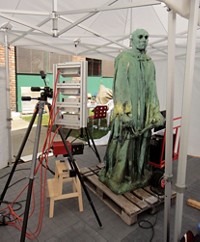Advertisement
Grab your lab coat. Let's get started
Welcome!
Welcome!
Create an account below to get 6 C&EN articles per month, receive newsletters and more - all free.
It seems this is your first time logging in online. Please enter the following information to continue.
As an ACS member you automatically get access to this site. All we need is few more details to create your reading experience.
Not you? Sign in with a different account.
Not you? Sign in with a different account.
ERROR 1
ERROR 1
ERROR 2
ERROR 2
ERROR 2
ERROR 2
ERROR 2
Password and Confirm password must match.
If you have an ACS member number, please enter it here so we can link this account to your membership. (optional)
ERROR 2
ACS values your privacy. By submitting your information, you are gaining access to C&EN and subscribing to our weekly newsletter. We use the information you provide to make your reading experience better, and we will never sell your data to third party members.
Analytical Chemistry
Improved Tomography Sees Through Art
Art Conservation: Researchers develop optical coherence tomography so that its resolution is on par with invasive sampling methods without losing sensitivity
by Sarah Everts
April 20, 2015
| A version of this story appeared in
Volume 93, Issue 16
Museum conservators often want to visualize layers of varnish and paint on artwork, for example, when they need to replace varnish on an old masterpiece during restoration. A research team based in England has now improved a technique called ultrahigh-resolution Fourier domain optical coherence tomography so that it can see through a painting’s layers noninvasively—and with the same depth resolution (around 1 μm) as traditional but destructive sampling methods (Opt. Express 2015, DOI: 10.1364/oe.23.010145). This improved tool for cultural heritage science comes courtesy of researchers developing tomography for visualizing tissue layers in the eye, notes the team, led by Haida Liang of Nottingham Trent University. Liang and her team needed to modify the eye technology to not lose sensitivity in deep paint layers. Then they demonstrated the technique’s strengths by visualizing the varnish and paint layers of “The Madonna and Child,” a painting from before 1600, perhaps by Raphael, at the National Gallery in London. The team compared the new method with a variety of other analysis techniques. The painting’s varnish is so yellowed that part of the Madonna’s dress now appears green instead of blue.





Join the conversation
Contact the reporter
Submit a Letter to the Editor for publication
Engage with us on Twitter